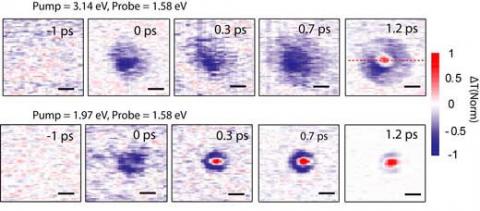Researchers at Purdue University and the National Renewable Energy Laboratory have found that certain hybrid perovskites could double the amount of electricity produced without a significant cost increase. This could help in creating efficient solar cells thinner than conventional silicon solar cells, that are also flexible, cheap and easy to make.

The material, a crystalline structure that contains both inorganic materials (iodine and lead) and an organic material (methyl-ammonium), boosts the efficiency so that it can carry two-thirds of the energy from light without losing as much energy to heat.
Currently, the common solar cells use silicon, which can transmit only one-third of the energy because of the band gap, which is the amount of energy needed to boost an electron from a bound state to a conducting state, in which the electrons are able to move, creating electricity. Incoming photons can have more energy than the band gap, and for a very short time the electrons exist with extra energy. These are called "hot carriers," and in silicon they exist for only one picosecond and only travel a maximum distance of 10 nanometers. At this point the hot carrier electrons give up their energy as heat. This is one of the main reasons for the inefficiency of solar cells.
This newly developed technique can track the range of the motion and the speed of the hot carriers by using fast lasers and microscopes. "The distance hot carriers need to migrate is at least the thickness of a solar cell, or about 200 nanometers, which this new perovskite material can achieve" the team says. "Also these carriers can live for about 100 picoseconds, two orders of magnitude longer than silicon". This could be critical for creating a commercial hot-carrier solar cell.
However, before a commercial product is developed, researchers are trying to use the same techniques developed at Purdue by replacing lead in the material with other, less toxic, metals.